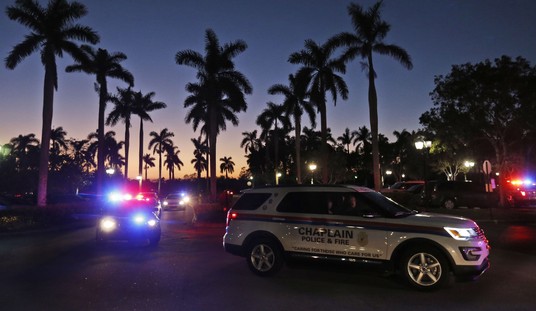An "innocent passage," the U.S. Navy said on March 4 as the aircraft carrier USS John C. Stennis and its escorts prepared to enter contested waters in the South China Sea. Enter it did, and a day later, over strenuous Chinese objections, the carrier strike group exited the contested zone.
The USN often employs the term Freedom of Navigation Operation when its vessels enters a maritime zone that the U.S. contends is open to free transit, but another nation claims to control. A FONOP is a combined military and diplomatic operation. It has long been U.S. policy to demonstrate its opposition to maritime territorial claims which intrude on recognized international shipping lanes
The Stennis' cruise in the South China Sea, however, also qualifies as a more ominous military and diplomatic operation: a "show of force."
China's government knew it was the principal audience for the USN's forceful show. China's foreign ministry issued official objections and asserted sovereignty. A senior Chinese naval officer promised China will deploy its own carrier group to "defend China's sovereignty of the islands and reefs, maritime rights and overseas interests." More on this vow in a moment.
China and the U.S. cooperate on many difficult and complex issues. China's recent support for stricter economic and political sanctions on North Korea is an encouraging example.
However, for over two decades China has been expanding its navy and air forces. Chinese nationalists say that China will become a global power.
In the South China Sea no passage is quite innocent, for in its sea space the US, the world's superpower, and China, Asia's foremost regional power, do more than compete -- they clash.
Recommended
At the moment their clash is confined to bouts of harsh diplomatic language and military posturing. But these bouts are occurring with frightening regularity.
The latest clash has echoes of April 2015, when U.S. President Barack Obama criticized Chinese island-manufacturing projects in the South China Sea.
Island-manufacturing may sound like an awkward term, but it's geographically and geo-strategically accurate. Here's a sketch of the process: Chinese construction barges protected by coast guard vessels (and perhaps navy ships) anchor around an uninhabited reef. The barges pour concrete. Over time an "island" big enough for a military air base appears. Beijing claims this creation as sovereign territory. China has used this scheme to encroach on Filipino territory. Slow imperialism? Yes. The islands become diplomatic stakes in the seabed and power projections platforms for the next geographic manufacturing venture.
However, in April 2015, Beijing completely rejected President Obama's criticism as out of bounds. Beijing accused Washington of militarizing the region. Chinese leaders scolded Obama for using the US's "sheer size and muscle to force countries into subordinate positions." The accusation consciously echoed Cold War Communist propaganda themes, but understandable since the Chinese Communist Party still rules China.
However, in East and South East Asia, location shapes perspective. For nations within range of China's armed forces, Beijing is the bully subordinating with economic might and military muscle. Malaysia, Brunei, Taiwan and Singapore have serious concerns. Vietnam and the Philippines contend they have already been victimized by a slow war of imperial aggression planned and executed by Beijing.
Though it won't happen any time soon, China's March 2016 vow to deploy a naval carrier group is a new, though anticipated, military factor. In 2012 China commissioned its first aircraft carrier, Liaoning. The carrier air wing has two-dozen jet fighters and 26 helicopters. At 65,000 tons, Liaoning is a large ship capable of "showing force" and waging war, particularly when protected by land-based -- or manufactured-island based-- aircraft. She currently serves as a training carrier. Training who for what? Training sailors and pilots to serve on the larger 90,000 ton fleet carrier China is building -- more muscle to subordinate the neighbors.

























Join the conversation as a VIP Member